Replacing your halyards is a great opportunity to upgrade the halyard shackles. In this blog we give a detailed rundown of the options available.
D-Shackles & Halyard Shackles
Perhaps the biggest category of shackles available. While we wouldn’t recommend using a standard D-Shackle on a halyard, there are some specialist examples which are ideal for main halyards.
Wichard Key Pin Shackles
Simple, elegant design with quick release pin. Captive thanks to a cross bar.
Ideal for: Main halyards on sports boats and small keel boats where key pin allows for quick rigging and de-rigging.
Reasons to avoid: Quick release pin is less secure than alternatives. Not suited to long distance sailing where the mainsail remains hoisted for several days.
Alternatives: Allen Brothers key strip shackle (for dinghies)
Wichard Thimble Shackles
A basic screw pin D-shackle with moulded plastic thimble. The shackle can be captive if spliced into the appropriate Diameter of rope with a small eye splice.
Ideal for: Main halyards on cruising boats where budget is limited.
Reasons to avoid: Only 2 sizes available. The plastic thimble has a budget feel to it and more premium options exist.
Alternatives: Tylaska Halyard shackles are the best upgrade from this.
Tylaska Halyard Shackles
A stylish, premium main halyard shackles made from machined aluminium including a faired thimble to fit snuggly inside an eye splice. The cross bar makes this shackle captive regardless of the rope / splice. A rubber ring around the pin head allows for a smooth tightening and makes it unlikely to shake loose.
Ideal for: Main halyards on cruising and racing boats alike, particularly where security for longer distances is required.
Reasons to avoid: The Tylaska Halyard shackles come with a hefty price tag. Ubi Maior produces a more affordable alternative with a similar design.
Alternatives: UBI Maior main halyard shackle
Shackles for 2:1 Halyards
A 2:1 halyard on the mainsail or code zero requires a block or friction sheave which should run smoothly on the halyard during hoisting and withstand the static load once sailing.
Wichard MXEvo Halyard Shackles
A solid but basic stainless steel friction sheave which is semi-captive on the halyard and has a plastic tag to make the pin captive.
Ideal for: The most affordable 2:1 sheave on the market, suitable for 2:1 halyards on cruisers or club racers. It is compatible with the majority of furler top swivels for a 2:1 code zero halyard.
Reasons to avoid: The plastic tag is annoying and can be easily pulled off or broken, making the pin no longer captive.
Alternatives: The Tylaska Halyard shackle mentioned previously can also be used as a 2:1 friction sheave.
Tylaska 2:1 Halyard Shackles
While the standard Tylaska Halyard shackles can also be used for 2:1, this version replaces the faired aluminium thimble with a composite sheave for reduced friction.
Ideal for: 2:1 main halyards on racing and cruising boats looking for a premium product with low friction.
Reasons to avoid: Less well suited to code zero halyards where a larger diameter sheave is preferable to spread the load.
Alternatives: Antal halyard block, Ubi Maior halyard block
Snap Shackles
Snap shackles are ideal for halyards which need to be regularly attached or detached from the sail, eg. spinnakers, gennakers and jibs on racing boats. There are broadly two categories: Trigger Snap Shackles which can be released under load and Piston Snap Shackles which feature a spring loaded pin.
Ronstan Swivel Snap Shackles
A basic piston snap shackle at an affordable price.
Ideal for: Jib and spinnaker halyards on cruising boats and cruiser/racers looking for a budget option.
Reasons to avoid: Like all piston shackles, these cannot be released under load and are harder to release with one hand than a trigger snap shackle.
Alternatives: Wichard HR snap shackle
Tylaska Triggersnap Shackles
The Tylaska ‘T’ series trigger snap shackles are the staple for many racing boats all over the world. This tried and tested design offers high working loads and the ability to release under load.
Ideal for: Spinnaker and jib halyards on racing boats where the shackle needs to be released quickly and often with one hand.
Reasons to avoid: As with most Tylaska shackles, you pay a premium. For cruising or occasional club racing, it is hard to justify the cost/benefit over a piston snap shackle.
Alternatives: Wichard speedlink, Ronstan Triggersnap
Soft Solutions
We are always promoting the benefits of soft solutions and halyard shackles are no exception. A soft connection to the head of your sail avoids a metal-on-metal link, reduces weight aloft and usually saves cost.
Loop Products Dogbones
A simple aluminium dogbone which can be built into the eye splice on the end of a halyard. The eye is then looped through the head of the sail and back onto the dogbone.
Ideal for: Main halyards on racing or cruising boats looking for a quick, performance solution. Without an additional shackle, the hoist height of the sail can be maximised.
Reasons to avoid: Must be custom spliced into the halyard and the rope diameter matched carefully to the dogbone. It is recommended to reduce diameter by stripping and re-covering the halyard end with Dyneema (as pictured) but this incurs additional costs. The Tylaska spool shackle is a similar product while other brands offer more standard dogbones where the halyard is spliced around the outside and so rope diameter is less critical.
Alternatives: Tylaska spool shackles, Allen Brothers dogbones, Armare dogbones, Tylaska dogbones,
Soft Shackles
Once a novelty and now an essential, a Dyneema® soft shackle is stronger, lighter and cheaper than its metallic equivalent. Soft shackles can be made captive with a loop of thin Dyneema or whipping.
Ideal for: Any halyard where quick release or one-handed operation is not required.
Reasons to avoid: For a spinnaker halyard, particularly on a racing boat, speed is often of the essence and a soft shackle may not be the answer.
Alternatives: Choosing a soft shackle is mostly about the diameter and the length. Many brands produce similar styles of soft shackle. Have a browse of the category.
Conclusion
From trigger release snap shackles to soft connections, the world of halyard shackles is broad. It’s worthing taking a little time to consider what style is most appropriate for each halyard and for your style of sailing. While a soft shackle is an ideal option for the mainsail, you might be grateful of a snap shackle on your spinnaker halyard the next time you are fumbling around on the foredeck in the dark, wet and cold, with reduced dexterity.
If you have any questions about Halyard Shackles and Dogbones, please feel free to email us at [email protected], or click the link below to see our full range:
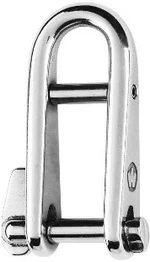
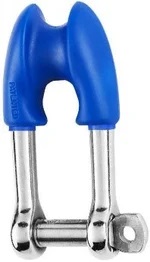
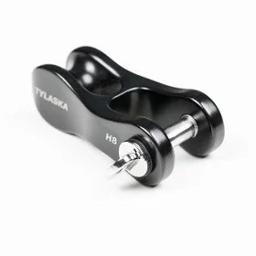
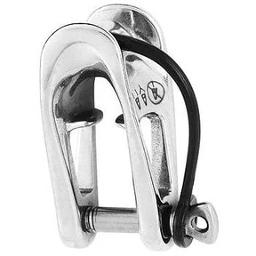
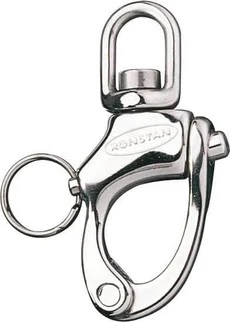
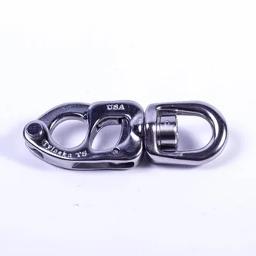
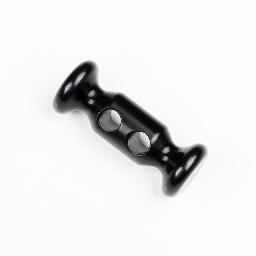
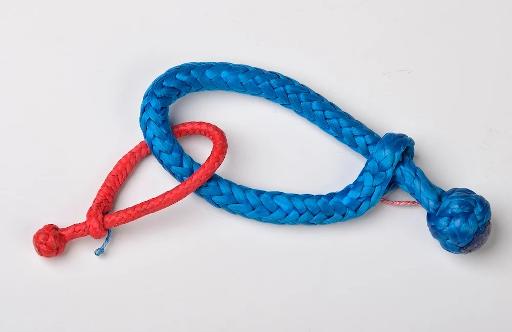


What Halyard Shackles & Dogbones Do I Need?